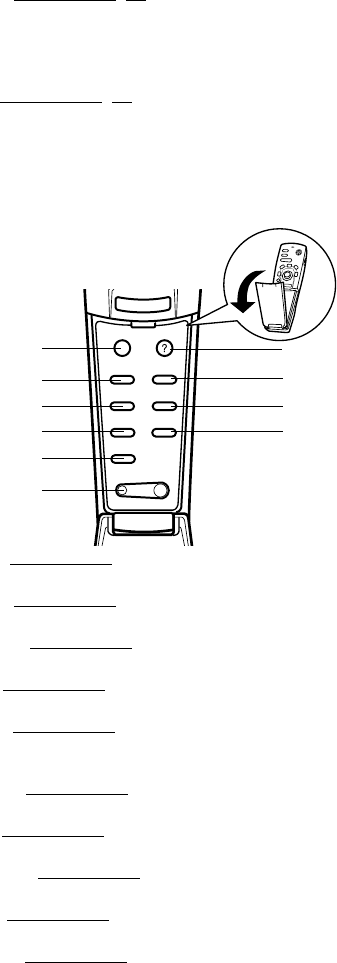
18 - Parts, Names and Operations
10 [Enter] button (see page 31, 63)
· Sets the menu item when pressed, and then moves onto the lower stage. Becomes a cur-
sor key to select the menu items when moved up, down, left or right.
· This function operates as a left-hand click on the mouse when computer images are being
projected. The pointer will move when this button is moved up, down, left or right.
11 [Esc] button (see page 31, 64)
· Ends the function being used. Returns to the previous stage when the menu or help text is
being displayed.
· This function operates as a right-hand click on the mouse when computer images are
being projected.
●
Inside of the Cover
1 [Menu] button (see page 63)
Displays and ends the menu.
2 [Comp] button (see page 38)
Switches across to the image from computer port.
3 [S-Video] button (see page 38)
Switches S-video images (S-Video).
4 [Auto] button (see page 46)
Optimizes the computer image.
5 [P in P] button (see page 59)
Displays the video image within the computer image or the video image as a sub-screen.
This function is cancelled by pressing this button once again.
6 [Volume] button (see page 60)
Adjusts the volume.
7 [Help] button (see page 49)
Displays the method of solving problems. Press this button when trouble occurs.
8 [Easy-MP] button (see page 38)
Switches the memory card data across to the projected Easy-MP images.
9[Video] button (see page 38)
Switches across to the video images.
10 [Resize] button (see page 52)
Switches between the window display and the resizing display when computer images are
being projected. Switches the aspect ratio between 4:3 and 16:9 when video images are
being projected.
1
5
Enter
Esc
Menu
Comp
S-Video
Auto
P in P
Resize
Video
EasyMP
Help
- Volume +
1
2
3
5
7
8
9
10
4
6
